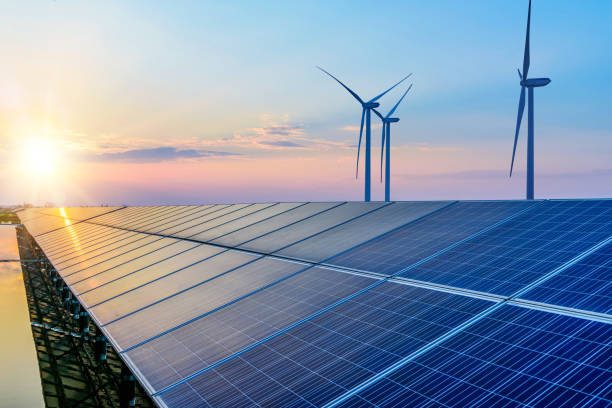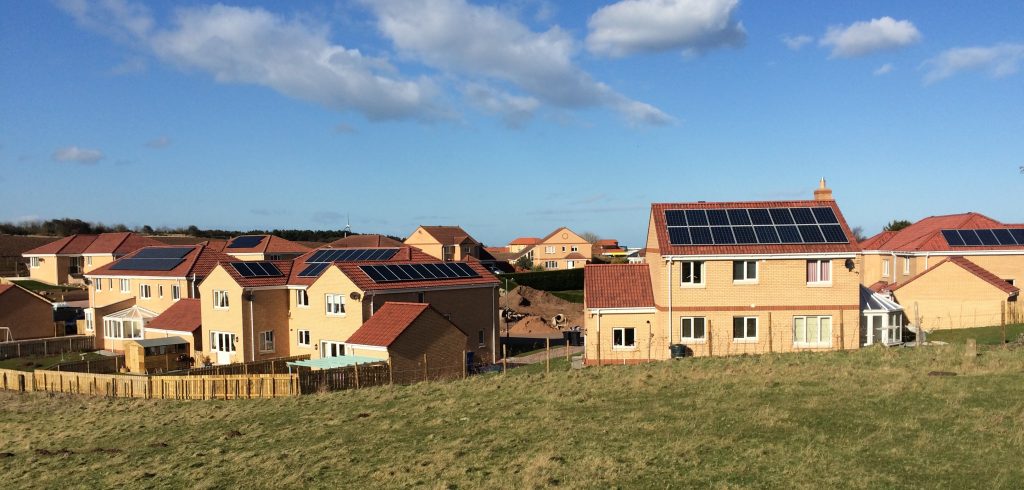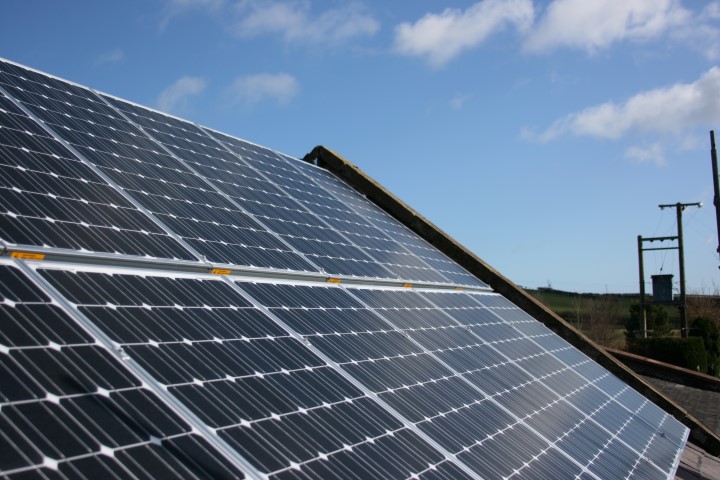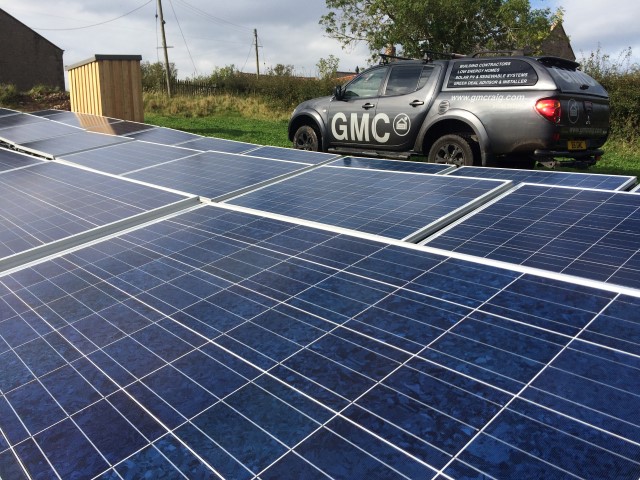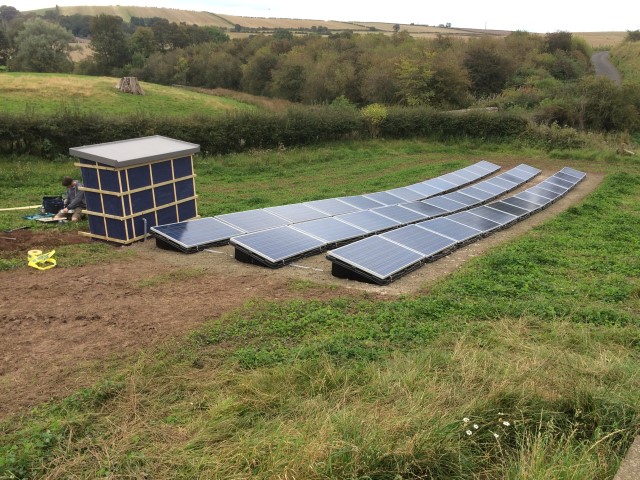Residential Solar
Why solar
i. Installing solar panels in the UK can offer several benefits, both financial and environmental. Here are some key reasons to consider:
ii. Renewable Energy Source: Solar panels harness energy from the sun, which is a renewable resource. Using solar energy helps reduce reliance on fossil fuels and contributes to a more sustainable energy future.
iii. Reduced Energy Bills: By generating your own electricity, you can significantly lower your energy bills. The more energy you produce and use, the less you will have to buy from your energy provider.
iv. Feed-in Tariff (FiT) and Smart Export Guarantee (SEG): While the FiT scheme has closed to new applicants, you may still benefit from the SEG if you generate surplus electricity. This allows you to sell excess energy back to the grid, providing an additional income stream.
v. Increased Home Value: Solar panels can enhance the value of your property. Many buyers are attracted to homes with solar energy systems due to lower ongoing energy costs.
vi. Environmental Benefits: Installing solar panels reduces your carbon footprint and greenhouse gas emissions, contributing to efforts to combat climate change and promote a cleaner environment.
vii. Government Incentives: The UK government offers various incentives and schemes to encourage solar panel installation. These can include grants, funding, and other support for renewable energy projects.
viii. Energy Independence: By generating your own electricity, you gain a degree of energy independence, reducing vulnerability to rising energy prices and supply issues.
ix. Low Maintenance Costs: Solar panels typically require minimal maintenance. They have a long lifespan (often 25 years or more) and, once installed, can provide a reliable source of energy with very few additional costs.
x. Grid Support: By installing solar panels, you're contributing to a reduction in demand on the National Grid, which can help with energy distribution and reliability, particularly during peak times.
xi. Futureproofing Against Rising Energy Costs: As energy prices continue to rise, generating your own electricity through solar panels can help protect you from fluctuations in energy costs.
xii. Before making the decision, it’s a good idea to assess your property's suitability for solar panels, including factors like roof orientation, shading, and local regulations. Additionally, seeking advice from solar energy experts can help you understand the investment costs, potential savings, and best options available to you.
The Process
i. Here at GMC SOLAR every job stats with an enquiry either call our friendly office to make an appointment or fill the contact us form.
ii. If you would just like a rough idea on costs before a site visit no problem we can give you an indicative cost for a common system before you invite a team member to call round and explain how it works, design a system to your requirements & give you a fixed price for the whole installation,
Installation types
i. On roof
1. The most common system we fit across all roof types. Our team of trades engineers have worked on almost all types of roof!
2. We mark out the panels are where the mounting system is required. After this locate fixings on the roof structure, the fixings are installed and made water tight before the rails and panels are fitted
ii. In roof
1. More common with new build homes or when re-roofing a building.
2. These systems replace the actual roof covering giving a more subtle aesthetic than the classic on-roof system.
iii. Standard vs Hybrid
1. Standard system is solar panels that generate electricity for the use to use there and then. If the electricity is not used the moment it is generated it is exported back to the grid.
2. Hybrid system has Batteries connected to the system. With this system the electricity generated is used to meet the electric demand of the house first, any excess stored for when required increasing the self-usage.
Installation details
1. Once you accept your quote and confirm deposit we provide an installation date for the works to start. During this time we take care of any applications required with your local DNO.
2. The scaffold will arrive followed by the roofing & electrical team. Generally residential PV systems take 2-3 days to complete.
3.
After care
1. GMC solar are here for the long run!
2. We have clients from 2011 that contact us for any solar questions. Either to look a faults or upgrades like more panels or batteries.
3. All new system are connected to your home wifi for online monitoring. GMC SOLAR manage this portal and any issues down the line can be assessed via the online portal.
4.
Residential Battery storage
Why Battery storage - Overall, integrating batteries with solar PV enhances the efficiency and reliability of solar energy systems.
i. Energy Storage: Batteries store excess energy generated during sunny periods, which can be used when solar production is low, such as at night or during cloudy days.
ii. Increased Self-Consumption: With a battery, homeowners and businesses can use more of the solar energy they generate, reducing reliance on the grid and maximizing the use of their renewable energy.
iii. Backup Power: Batteries provide a backup source of power during outages, ensuring critical devices and systems remain operational.
iv. Grid Independence: Homeowners can become less dependent on the grid, potentially leading to lower electricity bills and reduced vulnerability to energy price fluctuations.
v. Load Shifting: Batteries allow users to shift energy use from peak pricing periods to off-peak times, optimizing energy costs.
vi. Environmental Benefits: Utilizing stored solar energy contributes to a reduction in fossil fuel dependency, decreasing overall carbon emissions.
vii. Grid Support: For larger setups, batteries can help stabilize the grid by providing services like demand response and frequency regulation.
Options for Battery storage
i. Hybrid inverters – for new systems we almost always fit a hybrid inverter that controls the panels & battery. Also when to discharge & charge.
ii. AC coupled – for existing systems with a feed in tariff – we often fit a AC coupled system which allows storage without effecting the existing system and the important feed in tariff.
iii. Linking multiple inverters – for more complex systems we have options with some manufactures to link inverters using data cables to store multiple sources of energy.
Your GMC Solar advisor will be happy to explain and find the best solution for you.
SOLAR PV SYSTEMS
SUSTAINIBLE ENERGY PRODUCTION SINCE 2011
How solar panels work
Every solar PV system is made up of several components: solar panels (or ‘modules’), an inverter, a meter and your existing consumer unit. Zoom in on the diagram below to see how it’s all connected and understand how solar panels work.
How solar panels work
1. The sun gives off light, even on cloudy days
2. PV cells on the panels turn the light into DC electricity
3. The current flows into an inverter, which converts it to AC electricity ready to use
4. The current is fed through a meter and then into your home’s consumer unit Plug in and switch on. Your system will automatically use the free electricity you’ve generated, then switch back to the grid as needed
5. Any electricity you don’t use is exported to the grid.
Pure Drive Batteries
We install the latest electricity storage devices from Pure Drive to compliment your solar system and decrease your monthly outgoings. Having a pure drive battery enables you to connect to your system through a mobile or desktop device to monitor exactly where your coming from, how it is stored and when it is used.

